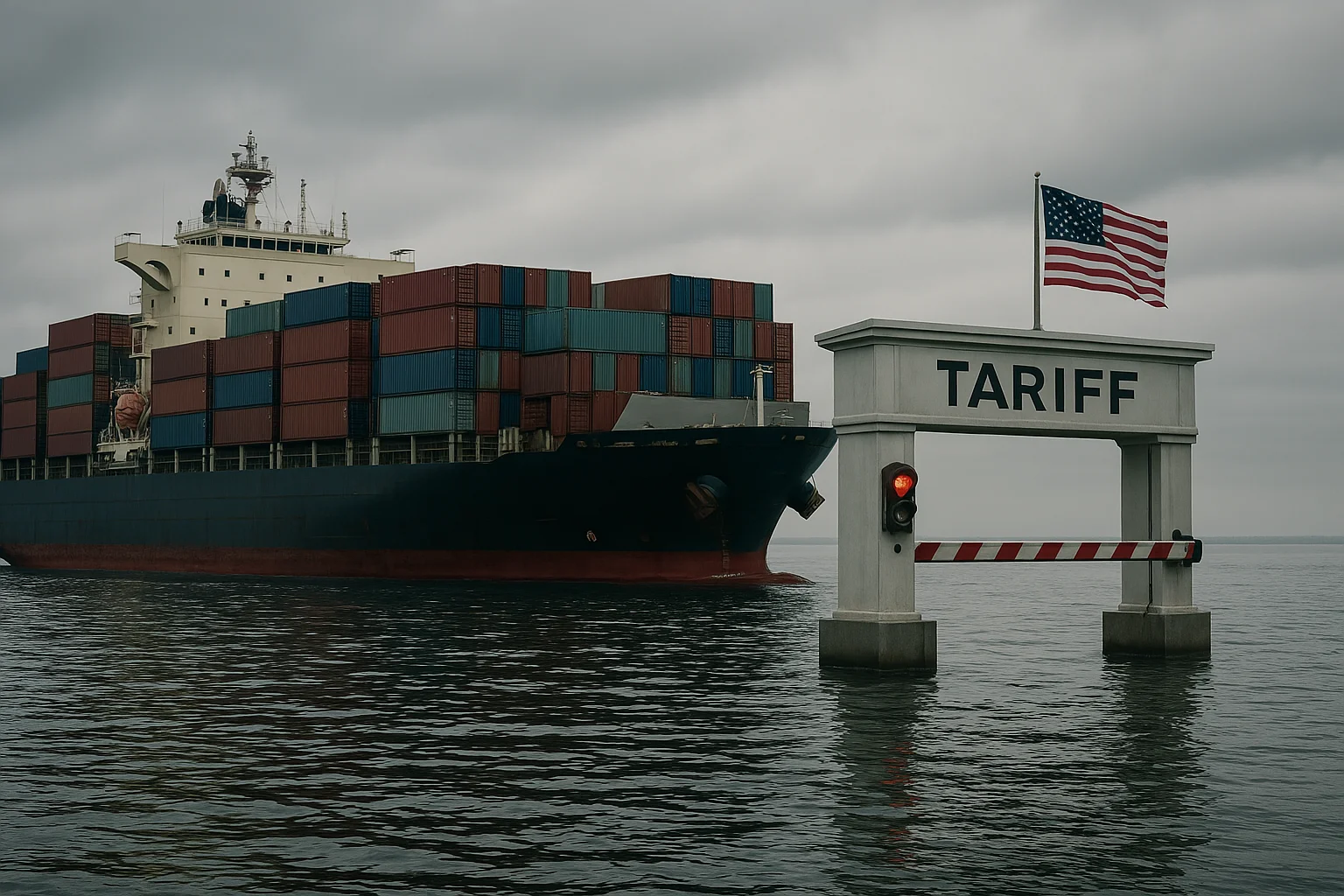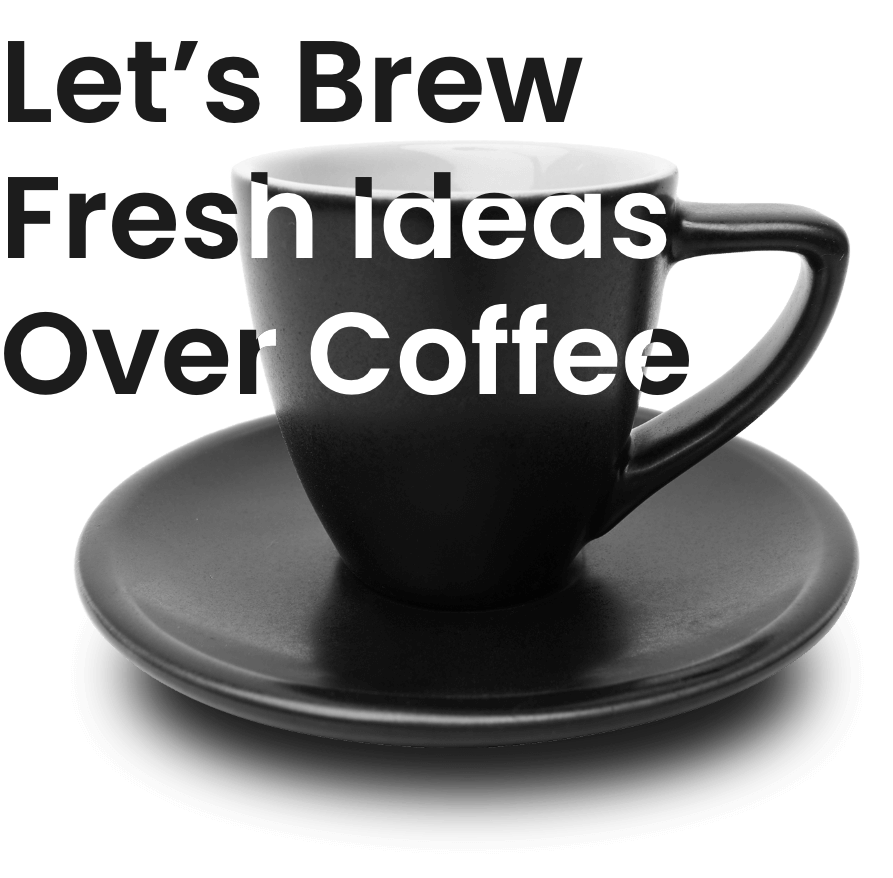Trade tariffs are back in the spotlight and this time their shockwaves are being felt far beyond supply chain managers or Wall Street traders. When the U.S. announced sweeping new tariffs on virtually all imports in early 2025, it upended business expectations across industries. Markets convulsed in response; in one session the Dow Jones Industrial Average plunged nearly 2200 points amid tariff fears, with automotive stocks like GM and Ford tumbling as their supply chains came under threat. Marketing leaders are discovering that tariff hikes may seem like a finance or logistics issue, but they’re quickly becoming a marketing challenge of the highest order. Why? Because marketing sits at the intersection of consumer behavior, brand value, and commercial outcomes and all three are being disrupted simultaneously by trade turmoil.
Key Insights:
- Turbulence = Opportunity: Trade tariffs and supply chain disruptions are destabilizing even the biggest industry players, but agile competitors can turn this volatility into opportunity by filling gaps and winning over disaffected customers and supply chains.
- Digital Wins in Uncertainty: When budgets are tight and conditions change overnight, digital marketing is the most flexible and cost-effective channel. Unlike print or outdoor ads locked in place, digital campaigns can be adjusted, targeted, or paused on a moment’s notice to minimize waste and maximize ROI.
- Agility Favors the Bold: Small and mid-sized businesses, in particular, can capitalize on this moment. By acting fast and reallocating resources to targeted “turn-on/turn-off” digital campaigns, they can outmaneuver slower-moving giants and capture market share while others scramble to adapt.
Tariffs and Turbulence: A New Marketing Reality
Global trade and supply chain disruptions triggered by tariffs are raising costs and uncertainty across industries, forcing companies to adapt their marketing strategies.The current wave of tariffs is creating a whiplash effect in the marketplace. After a week of chaos around new tariffs, global markets have been on an incredibly bumpy journey underscoring how deeply these policies can unsettle the business environment. For marketing leaders, this turbulence isn’t abstract; it hits home in multiple ways. Tariff-fueled cost increases mean higher prices for consumers, which risks dampening demand and slowing growth. At the same time, tariffs are tangling supply chains: delays at ports, costlier components, and sudden stock shortages have become common headaches. If a product line is stalled due to a tariff-induced supply disruption, quarterly marketing plans can be thrown into disarray overnight. A campaign promoting a flagship item might need to be pulled if that item is stuck in customs or suddenly too expensive to produce. In short, tariff volatility is destabilizing the very assumptions – stable pricing, steady inventory, predictable consumer confidence – that many marketing strategies rely on.
No industry is immune. Retail and consumer goods companies face pricing pressures and inventory inconsistencies as imported merchandise becomes pricier or scarce. Direct-to-consumer (DTC) e-commerce brands that source from overseas feel the pinch of rising production and shipping costs, often forcing them to consider raising prices or seeking domestic suppliers. Technology and electronics makers, reliant on complex global supply chains, are dealing with component delays and the need to realign marketing launches around uncertain product availability. In this environment, every marketing leader must become a rapid-response strategist, ready to recalibrate campaigns with little notice.
Crucially, the turmoil hitting corporate giants can open doors for others. When an industry leader stumbles – say, a global apparel brand struggling with tariff-induced supply delays – smaller or more nimble competitors can swoop in and take that account. Tariffs meant to protect domestic industries can indeed create opportunities for local players: some U.S. business owners are openly hoping the tariffs will “revitalize American industry” and give an edge to homegrown products over imports. In some cases, tariffs even encourage consumers to consider new alternatives, disrupting old loyalties. This means challenger brands have a chance to win over customers who are rethinking their options, and those offering local SEO for lawyers can leverage this moment to increase their visibility and attract new clients. The key is being prepared to act when an opportunity appears – which comes down to agility and bold marketing execution.
Digital Marketing: Agility in an Uncertain Climate
In a tariff-rocked economy, marketing agility becomes paramount. Plans that were set in stone last quarter might be irrelevant today. Traditional advertising channels – think print ads, billboards, or even fixed TV buys – lack the flexibility needed now. Once a print ad is in circulation or a billboard is up, changing the message or timing is costly and slow. By contrast, digital marketing offers a lifeline of flexibility. Brands can literally tweak or toggle their digital campaigns in real-time to respond to sudden changes in supply, costs, or consumer sentiment. It’s no surprise, then, that advertisers are seeking more flexible agreements to quickly adjust strategies and budgets in response to new tariffs and economic uncertainty. In practice, this means shorter planning cycles, contingency plans for creative messaging, and a heavier reliance on channels that allow quick pivots.
Budget accountability is sharper than ever. Facing uncertain sales and higher costs, many companies are tightening their marketing purse strings. Recent data shows marketing budgets have been under pressure – in fact, the average marketing budget fell from 9.1% of company revenue in 2023 to just 7.7% in 2024. Now, tariff-driven price spikes threaten to amplify that trend. Major ad forecasters have responded by downgrading 2025 ad spend projections: one analysis cut expected U.S. ad growth from 7.5% to 6.3%, and another shaved nearly $20 billion off global ad forecasts through 2026 due to “mounting uncertainty”. In plain terms, marketers are being asked to do more with less. Every dollar is being scrutinized, and the C-suite wants to see clear returns on marketing investments when the economic outlook is shaky.
This is exactly why digital marketing is emerging as the go-to strategy in turbulent times. 2025 will belong to brands that prioritize clarity, adaptability, and performance over sheer spend. Rather than pouring money blindly into big splashy campaigns, smart marketers are reallocating budgets toward channels where results are trackable and adjustments can be made on the fly. Performance-based digital ads – search engine marketing, programmatic display, paid social, Search Engine Optimization etc. – are particularly attractive now. Brands are indeed increasing investment in performance-focused digital ads and AI-driven tools to target consumers more effectively.
Usman Khalid, CEO of Centric, explains: “Centric is experiencing an exceptional year — driven by unprecedented demand from businesses looking to strengthen their digital presence. Whether it's enabling self-serve conversion flows to reduce reliance on sales teams or building brand awareness for locally manufactured products, companies are repositioning themselves to become the supplier of choice.” He continues, “It’s reminiscent of the early days of COVID — there’s uncertainty, yes, but also immense opportunity. Just like then, the bold will emerge stronger.”
It’s also worth noting that as uncertainty rises, many advertisers are pushing media partners for flexibility. TV networks have seen advertisers demand escape clauses or last-minute adjustment options in annual Upfront deals – an unheard-of stance in years past – because nobody wants to be stuck with a rigid plan if economic conditions sour. Some brands are even hedging by holding back spend for late-year opportunistic buys rather than committing all upfront. In parallel, certain marketers are doubling down on key placements that are likely to remain safe bets – for example, live sports broadcasts, which still draw reliable real-time audiences even in cord-cutting times. Live sports and other “must-see” events provide a stable arena for ads when other contexts are fragmenting, so they’re attracting those advertisers who have the budget to invest but want to ensure it’s in a sure-footed channel.
Digital-first, data-driven marketing isn’t just a trendy strategy – it’s a resilience tactic in an age of uncertainty. By staying light on their feet with digital campaigns, brands can conserve cash when needed, surge when opportunity knocks, and continually optimize to make every dollar count. As one analysis succinctly noted, advertisers who embrace digital tools will be better positioned to overcome the challenges posed by these new tariffs. For example, leveraging android application development services can help brands reach mobile-first audiences, enhancing engagement and ensuring effective, adaptable campaigns across digital platforms. Agility and accountability go hand in hand, and digital marketing provides both in spades.
Seizing the Moment: How Smaller Brands Can Thrive
If uncertainty is the new normal, then agility is the new competitive advantage – and this is where small and mid-sized businesses (SMBs) can truly shine. Large corporations often have entrenched processes, long approval chains, and yearly budget allocations that are hard to pivot. In contrast, a smaller business can make a marketing decision on Monday and see it live by Tuesday. That speed is a superpower in a tariff-disrupted market where conditions change weekly. Indeed, while tariffs certainly pose immediate challenges, they also present an opportunity for small businesses to build more resilient and adaptable operations. The same nimbleness that helps a small business tweak its operations (e.g. switch to a local supplier to avoid an import tax) can be applied to its marketing strategy as well. Leveraging enterprise SEO solutions can also be a key strategy, allowing businesses to optimize their digital presence for increased visibility and capture new customers, even as they navigate this disruption.
Capitalize on agility. The first move for SMBs is to reallocate any saved or excess budget into highly targeted campaigns that can be turned on and off as needed. For example, if a local manufacturer finds out that a giant competitor is struggling with import delays, the smaller firm can immediately launch a targeted ad campaign in their region, touting “Ready to Ship – Made Locally, No Tariff Delays.” These kinds of opportunistic strikes are only possible with digital channels. And if the situation normalizes or inventory runs low, the SMB can just as easily pause those campaigns – before overspending – unlike a printed flyer mailout or a month-long radio spot buy which is money spent regardless of outcome.
SMBs should also play to the narrative of the moment. Tariffs have stirred a certain consumer awareness of supply chains and origin of goods. Many consumers, whether out of patriotism or practical concern, are paying more attention to labels like “Made in USA” or “Locally Sourced.” A small business that can legitimately claim domestic production or stable local supply should shout it from the rooftops, and leveraging local SEO services for small business can help these businesses ensure that their local production stories reach the right audience effectively.
We’ve seen large brands do this effectively – Ford, for instance, launched a “From America, For America” campaign highlighting its U.S.-made vehicles and even extended employee pricing discounts to the public as a patriotic appeal during the tariff turbulence.
That’s a playbook smaller manufacturers can borrow on a smaller scale: emphasize your local roots and reliability. Trust and reliability are huge currency with customers right now, especially if competitors are faltering. Not every small business can eat the cost increase like Chipotle did, but even a gesture like a temporary price hold, a bonus reward for loyal customers, or an honesty in explaining why prices went up can set you apart. The goal is to show customers that you’re in it with them, not just passing along pain.
Another area where smaller companies can excel is resource rebalancing. In chaotic times, an SMB can decide to trim one expense and funnel funds into marketing to grab share while bigger players pull back. For instance, if trade shows or events are uncertain due to global trade issues or budget cuts, reallocate that spend into content marketing and SEO – channels that build longevity. Investing in owned media and organic growth is a savvy move when paid budgets are shaky. Many mid-sized brands ramped up their blogging, email newsletters, and community engagement during past crises (like the pandemic) and found that it paid dividends in customer loyalty and organic traffic. The tariff era is another such moment – by developing helpful content (say, a guide on how to choose affordable products or an update on industry supply trends) you keep your audience engaged even if you’re not flooding the market with ads. And importantly, owned content is an asset that isn’t subject to day-to-day market ad rates. Similarly, doubling down on retention marketing is wise: when acquiring new customers gets pricier, focus on nurturing your existing customer base to drive repeat sales and loyalty. Many small firms are using email campaigns to keep customers informed (“we still have stock, order now!”) and to offer perks that make people stick around. This is in line with expert advice to strengthen first-party data and loyalty efforts during uncertainty.
Finally, agility for a small or mid-sized business also means contingency planning. The tariff situation is evolving, so staying informed is part of the job for marketing leaders now. Keep an eye on policy changes – subscribe to industry news or trade alerts – because a new tariff on a material or an ally country could hit your sector with little warning. Have a gameplan ready: “If tariff X happens, we will do Y.” This might involve identifying alternative suppliers (which is more an ops move, but marketing should be looped in as it affects messaging and product availability) or preparing a customer communication in advance (“Due to tariffs, we’re making some changes, but here’s how we’re taking care of you…”). For example, if your company offers Design services for B2C businesses, your marketing team should anticipate how tariff changes could affect the availability or pricing of design tools and communicate those impacts clearly to customers. The U.S. Chamber of Commerce noted that many small businesses are “scrambling to strategize and prepare for price increases” and supply hiccups – the ones that come out ahead will be those who not only prepare internally but also craft the right marketing response externally. As a summary of best practices: audit your supply chain and marketing costs, diversify your customer acquisition channels, strengthen your retention programs, and stay vigilant about trade developments. This proactive stance will ensure you’re ready to seize any advantage and mitigate risks before they overwhelm you.
Conclusion: Adaptability as a Strategy
Trade tariffs and the economic jolts they bring are largely beyond any single company’s control. However, how your brand responds is very much within your control. The current climate rewards those marketing teams that build adaptability into their DNA rather than clinging to rigid plans. Whether you’re contending with thinner margins, shifting consumer behavior, or supply disruptions, the guiding principle is to be ready to pivot. As we’ve explored, that means favoring digital channels that let you tweak spend and messaging in real time, focusing on delivering clear value to customers to maintain trust, and jumping on opportunities that arise from competitors’ missteps or market gaps. It also means fostering a mindset of continuous learning – watching data daily, listening to customer feedback, and not being afraid to experiment with new tactics when old ones falter.
In an age of trade tariffs, marketing strategy must be as dynamic as the environment around it. Think of your marketing plan not as a fixed map, but as a GPS that’s constantly rerouting around traffic. Prioritize clarity, adaptability, and performance in every campaign. Be prepared to tighten or expand budgets with justification. Encourage your team to come forward with on-the-fly ideas (“We noticed our competitor just raised prices, let’s launch a quick social ad highlighting our better deal this week”). And importantly, keep a long-term perspective amid the chaos. Some brands will choose to hunker down and go silent until the storm passes, but history shows that those who stay present and maintain smart engagement with consumers can emerge stronger on the other side. As one industry observer put it, tariffs may dominate the headlines today, but the brands that stay agile and focused on customer value will own the future.
In summary, marketing in the age of tariffs is about turning disruption into momentum. By leveraging digital agility, reasserting your brand’s values and advantages, and acting decisively while others hesitate, you can not only weather the tariff turbulence – you can find growth in it. The playbook is evolving in real time, but the winners will be those who adapt fastest and never lose sight of the customer’s needs. Stay nimble, stay strategic, and this challenging period could become a springboard for your brand’s next stage of success.
Ready to strengthen your marketing strategy for uncertain times?
Fill out the form on the right and let’s discuss how Centric can help you stay agile, increase digital performance, and turn market volatility into growth. Our team is ready to support your next bold move.









